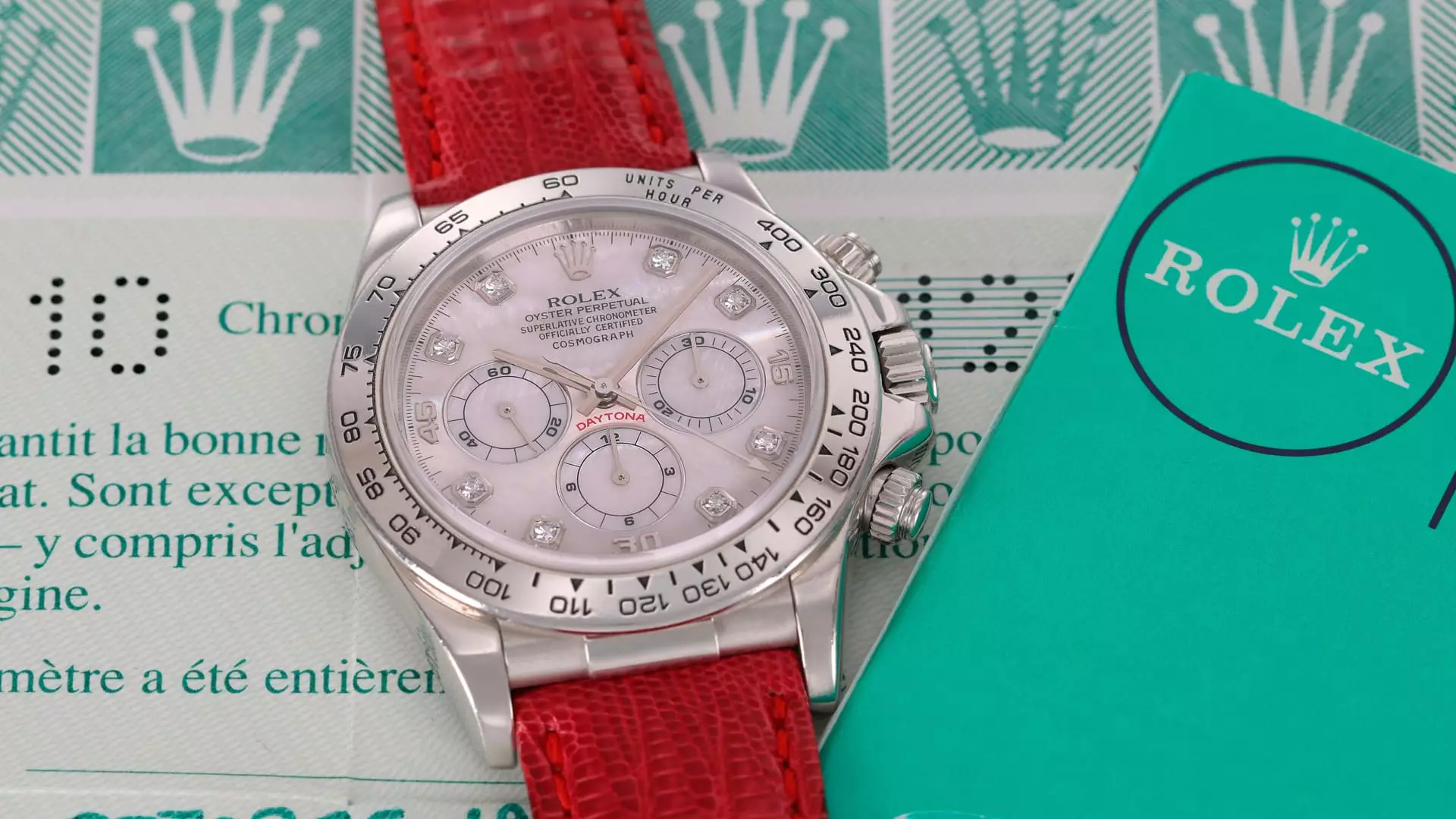In the world of luxury timepieces, few brands hold the same reverence as Rolex. This is a company synonymous with precision, prestige, and exclusivity. The impending auction of a unique 1999 platinum Rolex Daytona at Sotheby’s Geneva, estimated to fetch a staggering $1.7 million, reveals not only the financial stakes of luxury watches but also the rich narrative woven into each piece. Its rarity, as well as the aura surrounding it, is a reminder that some luxury items transcend mere function; they become stories in themselves, steeped in history, craftsmanship, and a touch of myth.
The Uncommon Material and Design
One might wonder what could possibly justify the astronomical price tag attached to this particular Daytona. On the surface, its composition offers a clue: made from platinum, a metal Rolex didn’t formally incorporate into its Daytona line until 2013. This pioneering timepiece challenges both consumer and collector perceptions. The fact that it was privately commissioned—vastly outside Rolex’s conventional production parameters—speaks volumes to its unique status. A watch forged from the rarest materials and engaging in a narrative of privilege is precisely what turns the world of luxury watches into a theatre of dreams.
Linking the Past with Present Aspirations
What is even more fascinating is the context behind its creation. At the helm of Rolex in 1999 was Patrick Heiniger, whose leadership transformed Rolex into a luxury icon amidst a backdrop of growing global opulence. While speculative tales persist that he either commissioned or sported a similar platinum Daytona, Pedro Reiser, a senior watch specialist at Sotheby’s, aptly points out the importance of discernment in the collector’s realm. The allure of this particular watch lies not just in its craftsmanship, but also in how this history resonates with today’s collectors, who often pursue watches that hold a narrative beyond mere aesthetics.
The diamond-set dial elevates this piece from mere mechanical ingenuity to wearable art. It invites rich interpretation—how does an object valued for its functionality evolve into a canvas that compels one to discuss culture, status, and even aspiration? In an era where luxury consumers increasingly associate timepieces with investments rather than mere accessories, this watch serves as an emblematic representation of a shifting paradigm.
The Convergence of Collecting and Investing
In recent years, luxury watches have transcended their original purpose. They are no longer simply to tell time; they are coveted trophies. As the economics of collecting evolves, data shows that watches have skyrocketed over the past decade, appreciating over 125% according to Knight Frank’s index. This remarkable uptick in value speaks to a tidal wave of new collectors entering the scene, galvanizing demand and interest in bespoke timepieces. The growth in numbers is reflected not just in established collectors but also in a younger demographic eager to stake their claim in the luxury market, with the surge of interest from under-30 buyers signaling robust potential for the industry.
Yet, in this frenzy of investment and acquisition, one must ponder: does this emphasis on financial value dilute the intrinsic artistry and passion that once defined watchmaking? Is the Daytona heading to auction a harbinger of a trend that skews the perception of luxury artifacts into mere cash cows?
The Myth and Reality of Ownership
The watch represents more than just a monetary investment; it encapsulates a legacy that unifies craftsmanship with artistry in a world often dominated by mass production. The challenge emerges when distinguishing genuine passion for horology from a purely transactional mindset. Part of Rolex’s allure hinges on its limited production, which fosters an underground mythology around models like the Daytona. The intersection of fact and rumor—such as the tantalizing thought that a Rolex CEO may have once donned such a piece—fuels desire, yet it’s this very mythology that can lead potential buyers astray if they become more enamored with the legend than the timepiece itself.
The upcoming auction will not merely be a financial transaction; it will be a ritualistic celebration of history, craftsmanship, and the unexpected convergence of myth and reality that defines the world of high-end horology. Thus, as this timepiece prepares to find its new home, it presents a question that every collector must grapple with: in the pursuit of luxury, will we prioritize value on a balance sheet over the magic that a truly unique watch can evoke? Only time—and the ticking hand of this extraordinary Daytona—will tell.

